Ryan Hall's Blog, page 259
May 4, 2016
Fueling Tips and Recipes for Before, During and After a Workout
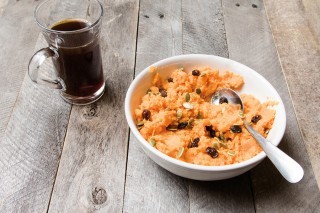
Apple Sweet Potato Mash, Photo: Courtesy of VeloPress
Adapted with permission of VeloPress from “Rocket Fuel: Power-Packed Food for Sports and Adventure” by Matthew Kadey, RD. Try free recipes at rocketfuelfoods.net.
If you’ve worked up the motivation to drag yourself off the couch for another training session, good for you—that’s half the battle. The other essential half of the workout equation is eating the right foods. Thankfully, fueling your workouts isn’t rocket science. Dial in your nutrition before, during and after exercise with these simple guidelines and recipes.
Before
Eating properly before exercise can help you work at a higher intensity for longer, resulting in greater performance gains in the long run. Here are some important tips to follow for your pre-workout nutrition:
Take a test drive
Before a big event, experiment with different types, quantities and timing of food during your training sessions. This way you can pinpoint what works (and doesn’t) for you. For instance, some athletes can eat a larger amount of food closer to their workouts without bringing on digestive woes.
Clockwork
Aim to consume a larger meal that contains a good balance of carbohydrates, protein and healthy fats 2 to 3 hours before a workout, and then follow this up with a smaller snack consisting of 150 to 300 calories 30 to 60 minutes before training. This gives you enough time to digest the meal and also provides a little pre-workout energy boost.
Not so fast
When gearing up for a sweat sesh, research suggests that opting for a lower-glycemic-index nibble before working out can bring about performance benefits. A low-glycemic snack (such as apple slices with nut butter or low-fat yogurt with berries) will raise your blood sugar more slowly, resulting in sustained energy as well as improved fat burning. Save the sugary chews and gels for during your race or training session.
Less is more
Too much fiber, protein and fat in your pre-workout nosh can weigh you down. That’s because these items slow down digestion and can result in digestive discomfort during exercise. So put away the bean soup or grilled steak for another time.
Recipe: Apple Sweet Potato Mash
High in complex carbohydrates, the sweet spud can provide some long-lasting energy for your impending exercise pursuit. But there’s no need to put your workout on hold while you roast or boil one up when this nifty microwave mash gets the job done quickly. Some add-ins, such as maple syrup, applesauce and crunchy pumpkin seeds, provide more motivation to work out.
Dairy-free, Gluten-free, Paleo-friendly, Vegan or Vegetarian
Servings: 1
Active Time: 10 min.
Although digestion rates vary, you’ll likely perform better if you give yourself 30 minutes or more for digestion.
1 medium-sized sweet potato, peeled and cubed
1/3 cup plain applesauce
2 teaspoons pure maple syrup
1/4 teaspoon ground allspice
1/4 teaspoon ground ginger (optional)
1 tablespoon raisins
1 tablespoon raw shelled pumpkin seeds (pepitas)
Place sweet potato cubes and 1 tablespoon water in a microwave-safe bowl. Cover with plastic wrap and poke a few holes in the plastic to allow for venting. Microwave on high for 6 minutes, or until potato is fork-tender. The bowl will be very hot, so use oven mitts or a dish towel to remove from microwave.
Add applesauce, maple syrup, allspice and ground ginger (if using) to bowl and mash together. Top with raisins and pumpkin seeds.
Game Changers: Replace applesauce with pear sauce. Mash in cinnamon instead of allspice. Use dried cranberries instead of raisins. Swap out pumpkin seeds for sunflower seeds.
The post Fueling Tips and Recipes for Before, During and After a Workout appeared first on Competitor.com.
May 3, 2016
Photos: The One-of-a-Kind Red Hook Crit 5K in Brooklyn
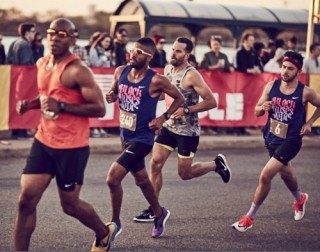
The Red Hook Criterium in Brooklyn started as an unsanctioned fixed-gear underground bike race in 2007. It was an immediate success, and a few years later race organizers started a 5K with similar charm.
The Red Hook Crit 5K took place over the weekend in the Red Hook neighborhood of Brooklyn. It’s a small Saturday evening race serving as the undercard to the bike race, with runners doing a “crit-styled” 1K loop five times. The winners were Sihine Mekuria Abebe in the men’s race (14:45) and Hasso Hayato Zeineba in the women’s race (17:37).
Here are photos of the race, taken by Pete Thompson:
Photo Gallery
1 of {count}
Back to Start
View Larger Image
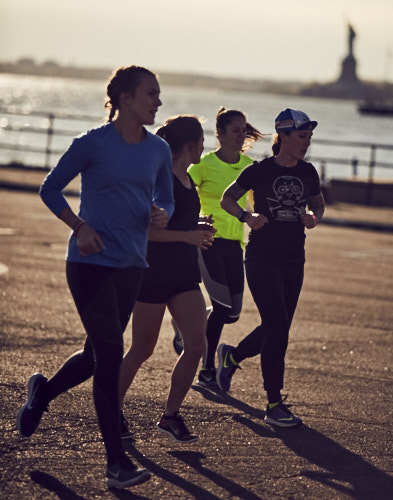
View Larger Image
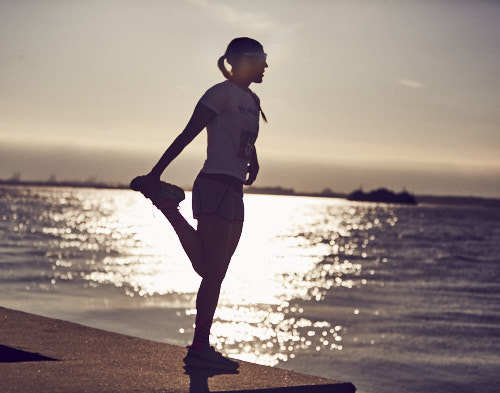
View Larger Image
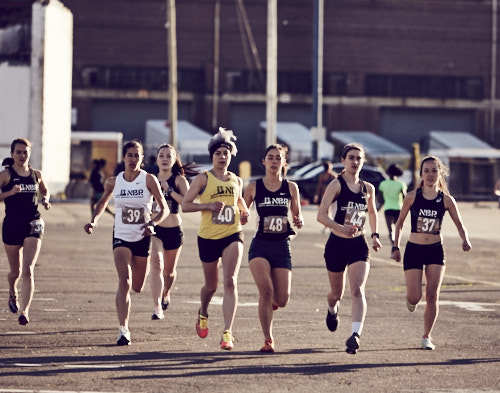
View Larger Image

View Larger Image
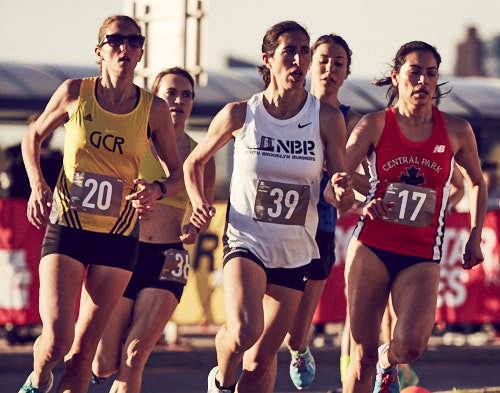
View Larger Image
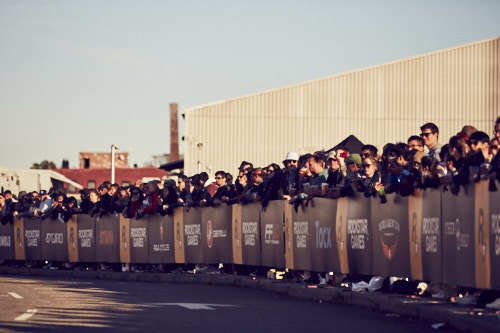
View Larger Image
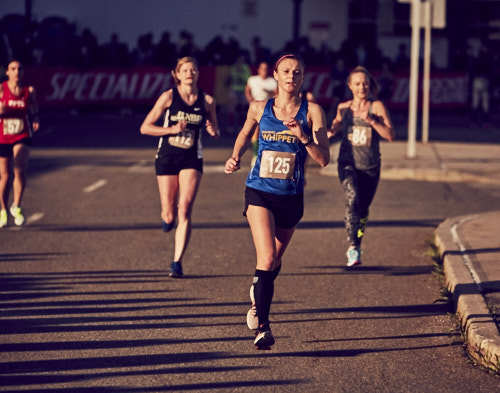
View Larger Image
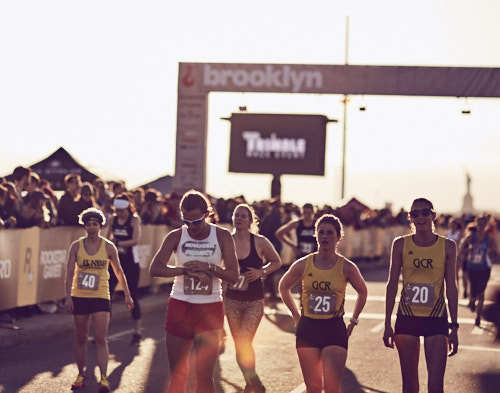
View Larger Image

View Larger Image
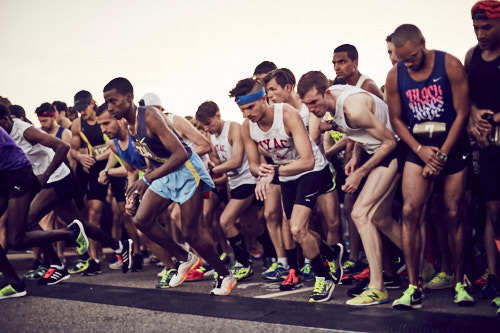
View Larger Image
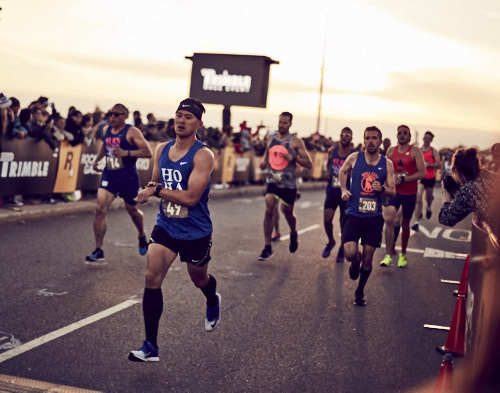
View Larger Image
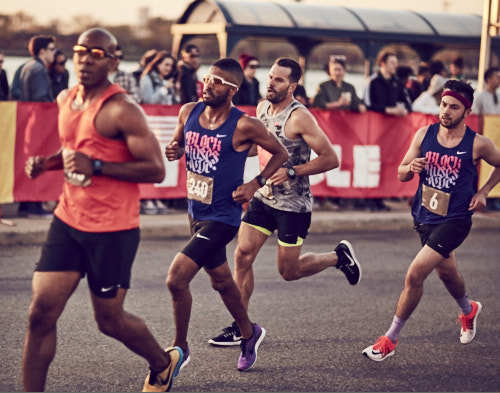
View Larger Image
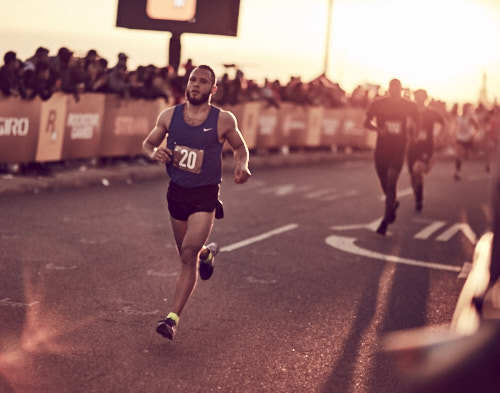
View Larger Image
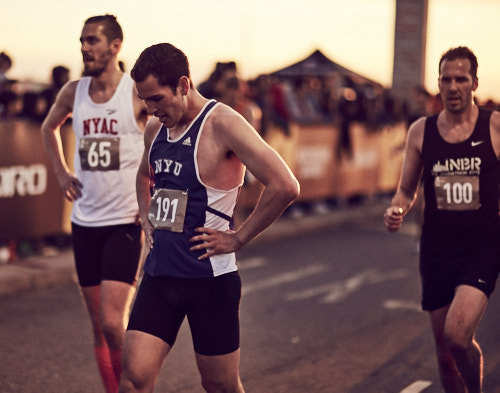
View Larger Image
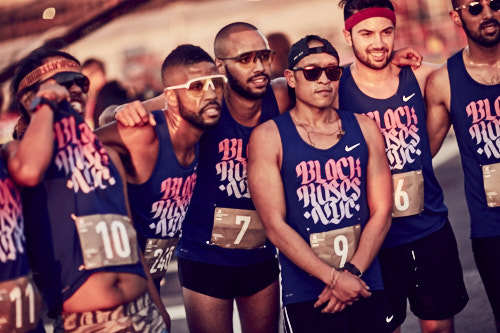
Related Galleries

Photos: 2016 Pittsburgh Marathon

Photos: KiDS ROCK Nashville
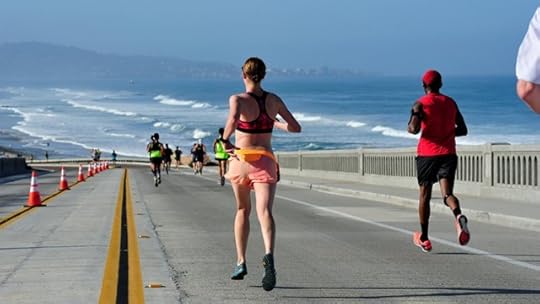
Photos: The Beautiful Scenery of the La Jolla Half Marathon
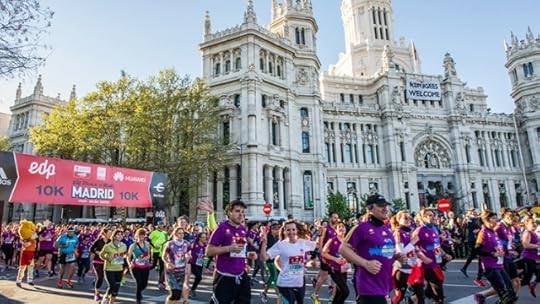
Photos: 2016 EDP Rock ‘n’ Roll Madrid Marathon

More Galleries
The post Photos: The One-of-a-Kind Red Hook Crit 5K in Brooklyn appeared first on Competitor.com.
Manipulating Carbohydrate Availability To Improve Running Performance

The dreaded bonk. Those who have experienced the physical shutdown of this energy-less state know how important carbs are to long distance running. It’s those stored carbohydrates, in the form of glycogen, that are primarily used by the body to fuel endurance exercise and because of that, ensuring adequate carb intake—i.e. carb loading—has become an important facet of training and a pre-race ritual for many athletes.
“Carb loading works and will continue to work. It works within a day,” says Dr. Asker Jeukendrup, one of the world’s experts in performance nutrition and author of Sport Nutrition: An Introduction to Energy Production and Performance. “We have known this since the 1960s that it is important to have full glycogen stores at the start of an important endurance event.”
But researchers wanted to go a step further: store carbs but also spare them by ramping up fat burning. Muscles then rely more on fat stores, a virtually inexhaustible source of energy for long-distance exercise, and save glycogen, lowering the chance of bonking. The body can only store enough glycogen for roughly 2 hours of exercise, but even the skinniest runner has enough fat to fuel over 100 hours of running.
Researchers began tinkering with carb availability, restricting carbs before exercise in an effort to force the body to “learn” how to burn fat as a fuel, a strategy they called “train low.” These attempts at using fat to stoke the fires of endurance exercise didn’t go too well, however. Despite the clear physiological changes found after training with low-carb availability, performance showed no improvement.
In fact, emphasizes Jeukendrup, most of the “train low” studies so far have been unable to show actual performance benefits. “Training low is something that does not work short-term (studies often show a reduced exercise capacity and lower quality of training when training low),” he says. It’s hard to train in a perpetually bonked state.
Realizing that the “train low” strategy lacked practical value, a team of researchers from France and Australia attempted to learn from past research and build a strategy that didn’t just work in the lab, but actually enhanced endurance performance. In the study, presented in Medicine and Science in Sports and Exercise, an experimental group of trained triathletes, termed the “sleep low” group, was given the following strategy: a carbohydrate-fueled high intensity training session in the evening followed by a low-carb recovery and overnight fast, depleting muscle glycogen for the night. The following morning, the athletes had a prolonged, moderate intensity training session preceded by a light, low-carb breakfast, forcing their glycogen depleted muscles to adapt to burning fat.
The control group maintained their usual carbohydrate intake over the day and tackled each training session with normal or high carbohydrate availability.
After the three-week study period had concluded, the experimental group showed a 73-second improvement in a 10K running time trial. And not only were they faster at race pace, the “sleep low” group became more comfortable at a lower intensity, improving exercise efficiency and decreasing perceived effort.
The researchers concluded that the “sleep low” protocol used in the study allowed the runners the best of both worlds—high carbohydrate availability for intense training during the day and low carbohydrate availability at night to spur the body to use fat as a fuel. “Our study provides evidence that periodizing carbohydrate availability around these training sessions is an important determinant of the performance results,” the study concluded.
But significant improvement or not, experts advocate caution in implementing the strategy during an important training or race period without first trying it out.
RELATED: The 10 Biggest Sports Nutrition Myths
“If done well, periodized well, dosed well and integrated well with training, the risks are minimal. But this is the challenge and this is where many make the mistake. These strategies are not intended for everyday use. Use them occasionally and strategically,” emphasizes Jeukendrup.
Dr. Stacy Sims, exercise physiologist and nutrition scientist, believes that while the results can be generalized to male runners similar to those studied, large scale testing needs to be performed before it can be recommended to all. “We can say that the men in the study most likely will have similar results on the road, and men similar to these dudes in the study may also have similar results, but we can’t generalize to older or younger men, and definitely not women,” Sims says.
Jeukendrup also believes that since this is the first study that has demonstrated a benefit from a “sleep low” strategy, the results should be interpreted with caution.
“I would use strategies like this (and other “train low” strategies) in a preparation phase,” he says. “Once athletes enter a competition phase there must be an emphasis on recovery and quality of training while minimizing risk of injury, overtraining and getting ill.”
For those that are interested in squeezing out every last ounce of potential performance, the “sleep low” researchers may be on to something. Manipulating carbohydrate availability along with training intensity during training has the potential to improve performance—just use it wisely.
RELATED: Carbohydrate Manipulation For Better Performance
The post Manipulating Carbohydrate Availability To Improve Running Performance appeared first on Competitor.com.
Watch: 100-Year-Old Runner Sets World Record In 100m at Penn Relays
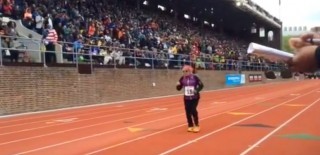
Watch as Ida Wheeling, 100 years old, sets a world-record for 100-year-old competitors in the 100-meter dash for 80-and-older Masters runners at The Penn Relays in Philadelphia this past weekend. While Wheeling finished last in the race—she leaned at the tape and crossed in about 78 seconds—no one her age has ever run faster. Go Ida!
RELATED: Irish Runner Leads Relay Team To Victory With Crazy Kick!
The post Watch: 100-Year-Old Runner Sets World Record In 100m at Penn Relays appeared first on Competitor.com.
Injuries Suck—Here’s How to Make the Best of Them
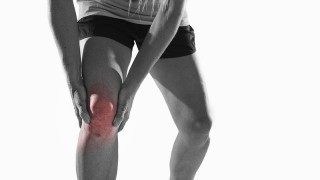
Injuries suck. They are the horrible nightmares no runner wants to wake up to, be it from an accident or a product of overuse. Any medical setback throws a major wrench in training as well as sanity.
The good news is there’s a silver lining. Time off can serve as a rebalancing period to fine-tune mental toughness and focus and improve physical problem areas.
I wish someone told me that five years ago when my three-and-a-half year collegiate running career was cut short by redshirts, countless hours of cross-training and rehab, and the inability to train consistently.
Although I couldn’t get ahead of my injuries and wouldn’t have thought of my injuries as blessings in disguise at the time, those setbacks armed me with tools to become a better athlete, which I’m now reaping the benefits from as a marathoner.
There are many pros to your unfortunate injury con, which we’ll discuss in detail below. Be proactive and use this setback as an opportunity to revaluate your goals, improve your mental game and reignite your competitive fire.
Fine-tune mental drive and focus
Recovering from injuries is undoubtedly difficult, but it also gives you an opportunity to remember why you want to recover in the first place.
Why do you enjoy running? Why did you set the goals you have? Why is it important to you to achieve them?
These are all vital questions, as they are the reasons you do what you do every day. Take this time to reflect on them and realign yourself with their answers. It will refuel your desire to run, helping you persevere through the injury and appreciate running in a new light once you’ve overcome it. You’ll likely be more hungry to achieve your goals than you were before.
Rely less on the “schedule”
Sometimes we get so caught up in the little things–like our mileage plan, weekly training schedule and daily routines– that we forget why we’re doing them in the first place, or we panic when something out of routine happens.
It’s unrealistic to think you can stick to a set plan 100 percent of the time. You may not recover as well from a workout, not get enough sleep one week, or feel more fatigued than normal. Whatever the case may be, life happens and that’s okay.
Plans are in place to keep you on track, but remember they are fluid structures. They should ebb and flow according to your needs. So, be flexible and open to adaption; take it day-by-day. Doing so will also help you overcome adversity when it comes to race day. Because let’s face it, despite pre-competition visualization or training to accommodate for different race scenarios, there’s no telling how a race will go.
Listen to your body
The recipe to success is not necessarily a set quantity, consistently hitting your planned mileage, or always having workouts on Fridays and long runs on Sundays. It is being aware of your body, giving it what it needs, and trusting in the process. If you aren’t in tune with your body’s needs, you put yourself at a greater risk of future injuries.
Yes, motivation and dedication are excellent qualities to have as a runner, but it is just as important to know your limits. There’s a fine line between pushing yourself and training through aches and pains to hit your daily mileage or get through a workout.
Abnormal fatigue and pain are warning signs: your body telling you it needs recovery or you’re overworking it. The more you work on opening communication between your conscious mind and your body’s requirements, the better equipped you’ll be to avoid injuries and optimize your training and performances.
It takes some practice to know when your body is telling you to ease up and when you should keep pushing through. Are you tired or hurting simply as a result of having a good training day, or because you’re lacking proper recovery or you’re overtraining?
Often, simply stopping to ask yourself these questions can help you determine the best course of action. Other times it’s more difficult to tell, but conversing with a coach or training buddy can help you determine the answer.
“Recognize that most injuries are simply a temporary setback,” says Joseph Potts, a sports performance coach in Kansas City, “and can serve as a time of self-evaluation and progress where you can really work on your body and correct any individual weaknesses. Approach your rehabilitation and continued training with the same aggression and focus that you could use in competition.”
Beat your toughest competition
The biggest opponent is the one in your head. Come to grips with him or her through means such as meditation and establish a routine that will last post-injury. It will help you cope now as well as benefit your athletic performance later in numerous ways:
Focus: Something every runner can work on, and it will give you a competitive edge over your competition.
Cope with pain: Whether to help with the pain of an injury or the burn of a workout or race, runners are always dealing with something.
Mental Toughness: Be it self-doubt or dealing with adversity, being resilient will help you achieve your goals.
Reduce stress: Meditation is an effective option to help decrease some of the stress from being injured or other stresses in your personal or work life.
Just 10 minutes a day can go a long way.
An injury is a prime opportunity for athletes to exercise other cognitive implements, according to Vanderbilt Athletics Sports Psychologist and former FBI Supervisory Special Agent, Dr. Vickie Woosley.
“The athlete would be able to spend time on techniques such as visualization, mental imagery, develop a strong mental toolbox of skills that are easily accessible for dealing with situations [during and outside of competition],” Woosley says.
She suggests athletes engage in talk therapy with a professional to learn how to best implement these techniques and to discuss fears, expectations, and what returning to a competitive environment may look like.
Harvest gratitude
It’s easy to get caught up in your routine when training. You put your head down and get it done. Each day is a checked box on your grand to-do list. Often times we’re so focused on the outcome, we forget to appreciate the process. Truly, “you don’t know what you’ve got til it’s gone,” and time out of your routine makes this apparent. Recognize that every healthy day, whether an easy run or a tough workout, is another chance to do what you love and improve.
Have more time for other things
Look at the time needed to heal yourself from injury as an opportunity to reach out to family and friends who you otherwise had less time for when training. It’s the perfect excuse to reconnect. Fill your time with any and all people and activities that bring you joy, and the injury blues will fade away.
The post Injuries Suck—Here’s How to Make the Best of Them appeared first on Competitor.com.
Rejuvenated MBT Brand Returns With New Running Shoes
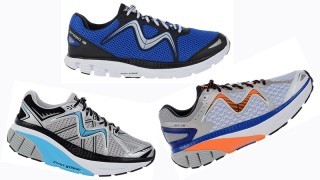
MBT's 2016 running models (clockwise from bottom left): Zee 16, Speed 16, GT 16
Now that the running shoe revolution has died down a bit, MBT, one of the original innovators, is back with a variation of one of its original ideas.
Back in the late 1990s and early 2000s, MBT debuted fitness walking shoes with a unique rocker profile. What’s a rocker profile? It’s a convex or outwardly curvy shape to the bottom of the shoe that creates a rolling sensation during a walking or running gait. In other words, the unique geometry of the underside of the shoe helps the foot immediately roll forward upon contact with the ground. The shoes gained notoriety and those who liked them swore by them. In fact, it helped spawn a trend, too. But some unsubstantiated claims related to the “toning shoe” fad circa 2009-2010 led to the downfall of the brand—and many others that made similar claims.
However, the premise of MBT—which originally stood for Masai Barefoot Technology in the brand’s original incarnation—was just as applicable to running and not just fitness walking when Swiss engineer Karl Muller conceived it. Rocker designs have emerged on several brands in the interim, including Hoka One One.
In 2013, a new organization bought the MBT brand out of bankruptcy and it has since been working behind the scenes to develop running shoes that utilize the rocker technology to serve up a soft, smooth ride. In March, it launched its first three models—the lightweight, race-ready Speed 16 ($110), the performance/cushioned GT 16 ($150) and the maximally cushioned Zee 16 ($170)—at MBTRunning.com and select running stores around the U.S.
MBT has made many types of casual dress shoes and lifestyle sandals, but the running shoes officially launched in early March. Although each of the three running models are distinctively different, each incorporates a rocker profile, a stiff nylon shank in the midfoot and a tri-density foam midsole that is softer in the heel, semi-firm in the midfoot and firm in the forefoot.
A few retailers think the new rocker-bottomed MBT running shoes could be an ideal solution for oft-injured Baby Boomers.
Competitor’s wear-test team has done preliminary testing with the shoes and has reported that the rolling sensation is very pronounced and creates a propulsive forward flow. Running in the shoes takes some getting used to—at least compared to what more traditional shoes feel like—but most our our testers appreciated the rocker concept once they found their groove. A few of our testers weren’t sold on the more thickly cushioned models, but the Speed 16 shoe ranked as the hands-down favorite.
“Each of the models is different, but they seem to distribute the weight more easily than most shoes. There are less pressure points that you’d find in traditional running shoes,” says Steve McCachren, footwear buyer for SageSport, which has stores in Boone, N.C., and Mt. Airy, N.C. “They have a unique design that seems to work well with a midfoot-striking gait or a slightly forefoot-striking gait.”
McCachren says SageSport has found that older runners and joggers who appreciate more cushioning trend toward the GT 16 and the Zee 16 models, while younger, faster runners seem to like the Speed 16.
Sue Orischak, C.Ped., a registered pedorthist and owner of Foot Solutions in Scottsdale, Ariz., agrees with the idea that the MBT shoes are ideal for older runners and walkers who might be suffering from a variety of foot, knee and back ailments. (There have even been studies to support that idea.) Foot Solutions was one of the original MBT dealers during its first incarnation and Orischak was eager to bring in the GT 16 and the Zee 16 this spring. She’s already sold through her inventory of those shoes and ordered more.
“With the aging of the (Baby) Boomers, there is a strong place that delivers the functionality and the soft ride,” Orischak says. “The stable rocker bottom helps off-load pressure from the lower back.”
MBT brand director Ken Ueda says the fact that the brand is offering something entirely unique gives it its best chance for success in a crowded running shoe marketplace. Ueda said the running shoes are off to a good start— 300 pairs of its running shoes were sold in its first two weeks and strong sales continued through the first two months. In the coming years, Ueda says MBT will roll out a stability shoe and a trail running shoe.
“We feel that we have a very impactful technology that really benefits walkers and runners,” Ueda says. “We’re trying to tell our story about being a new brand with new products, something different. In the running marketplace there is so much ‘me too’ product with similar types of foam with different names or stack heights. But with our tri-density construction, the nylon shank and the rocker profile, we feel like we have three unique things to talk about that really benefit runners.”
The post Rejuvenated MBT Brand Returns With New Running Shoes appeared first on Competitor.com.
May 2, 2016
6 Small Running Brands Making Big Impacts

The running marketplace has been and still is mostly run by industry giants. Nike, New Balance, adidas, ASICS and similar brands dominate. However, smaller running-specific brands are entering the playing field with one-of-a-kind products, innovative ideas and quality, purpose-driven gear. They’re setting trends as opposed to following them. They’re expanding the definition of running. In this age of startups, we profile six of the most influential micro-level running brands and the entrepreneurs who founded them, and what they have to offer the sport that’s game-changing.
The post 6 Small Running Brands Making Big Impacts appeared first on Competitor.com.
Beer & Running: Running-Themed Microbrews
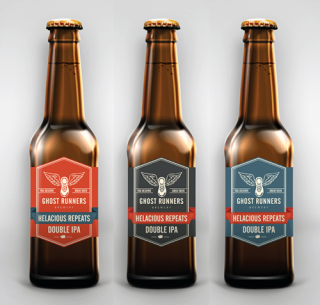
Numerous breweries have produced seasonal or one-off running-themed beers in recent years, including Pace-Setter Belgian-Style Wit (Mavericks Brewing Co.), Blue Mile Extra Pale Ale (Flat 12 Bierwerks), Runner’s High-P-A (Lagunitas Brewing Co.), Tail Wind IPA (Big Boss Brewing Co.), 200-Meter IPA (Rogue Ales Brewery/Track Town Ales) and Marathon Blonde (Toner Brewing Co.). Those beers have all gone away, but the photos below depict six running-themed brews available now.
RELATED: Beers Brewed Just for Runners
VIDEO: A Running Store with 20 Beer Taps
Photo Gallery
1 of {count}
Back to Start
View Larger Image
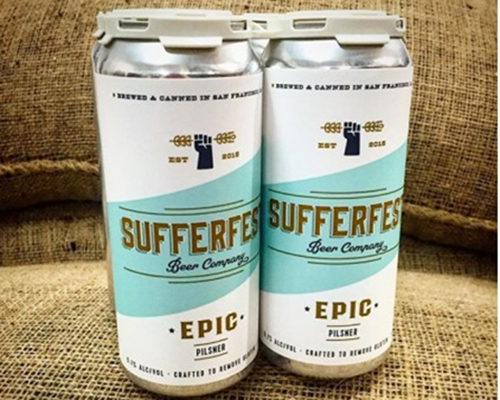
Sufferfest Epic Pilsner—Sufferfest Beer Co., San Francisco
With full-bodied earth tones and a hint of spice, the Epic’s Saaz hops bring a zesty start, followed by a rich grain flavor to finish like a winner. ABV: 5.1 percent IBU: 30
View Larger Image
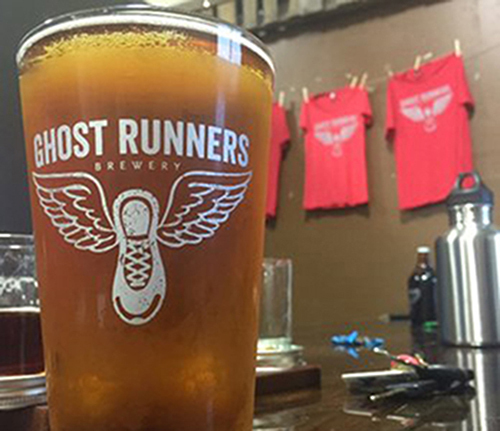
Ghost Runners 5K IPA—Ghost Runners Brewery, Vancouver, Wash.
A bold, bitter Northwest IPA with notes of pine, orange and grapefruit. ABV: 6.4 percent IBU: 95
View Larger Image
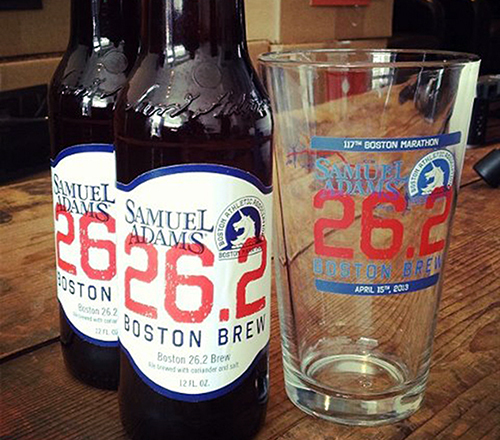
Samuel Adams 26.2 Brew—Boston Brewing Co., Boston
This light-bodied Gose-style ale features Samuel Adams’ two-row pale malt blend and Saaz Noble hops with a finish that has a hint of coriander and crisp citrus notes. ABV: 4.5 percent IBU: 15
View Larger Image
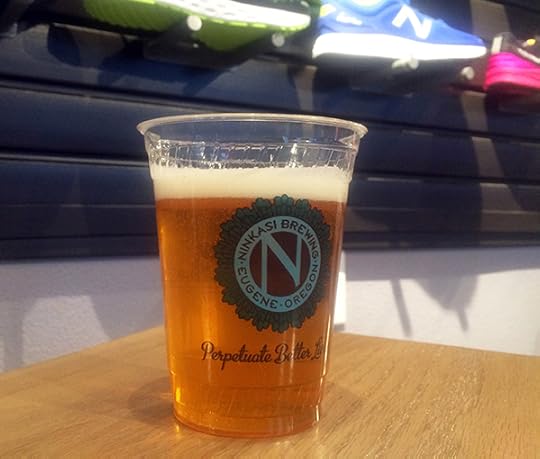
Ninkasi Beer Run IPA— Ninkasi Brewing, Eugene, Ore.
Beer Run is an invigorating, full-flavored IPA with a hint of mulled spices and a mild aroma of citrus. ABV: 7.3 percent IBU: 80
View Larger Image
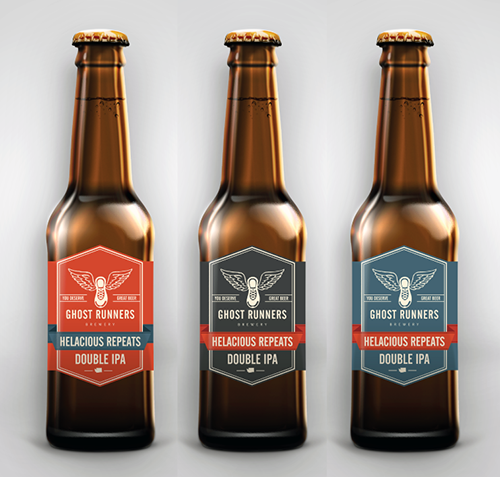
Hellacious Repeats Double IPA—Ghost Runners Brewery, Vancouver, Wash.
Ghost Runners calls this the ultimate reward for pushing your mind and body beyond comprehension. This slightly citrus, creamy double IPA is made with Magnum Hops and premium grain for a taste that won’t quit. ABV: 8.4 percent; IBU: 90
View Larger Image
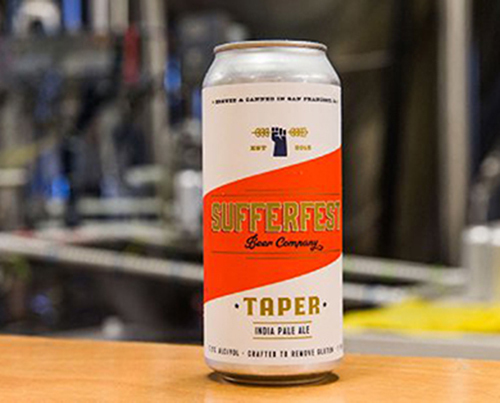
Sufferfest Taper IPA—Sufferfest Beer Co., San Francisco
This bold-tasting IPA sports soft caramel notes, and balances its bitterness and hop aroma with a bright, clean aftertaste. ABV: 7.5 percent IBU: 67.3

More Galleries
The post Beer & Running: Running-Themed Microbrews appeared first on Competitor.com.
Beer & Running: Beer Brewed Just For Runners
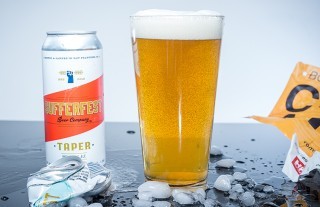
The name "Sufferfest" is a tongue-in-cheek reference of how runners refer to a hard workout or a grueling race. Photo: Ed Grant
A look at how upstart beer brands are targeting thirsty runners.
If you’re over 21, finishing a run and having a cold beer seem to go hand-in-hand nowadays.
From having a cold post-run beer at a running store fun run to brewery-sponsored races to the rise of beer mile races and even a running store that doubles as a bar (Shoes & Brews in Longmont, Colo.), beer and running seem to be inexorably linked.
Now several brewing companies are making beer especially for runners and other fitness-minded people. San Francisco-based Sufferfest Beer Company was launched recently by trail runners (and ex-Strava employees) Caitlin Looney and Alyssa Berman-Waugh. The upstart brand has two light and tasty runner-themed beers out so far—Epic Pilsner and Taper IPA. (Although technically not gluten-free, each of the beers have gone through a chemical process that breaks down gluten from wheat or barley and are referred to as beers “crafted to remove gluten,” according to the FDA.)
RELATED: Six Running-Themed Microbrews
The beers are available in pint cans and sold at liquor stores and select restaurants in the San Francisco Bay Area. The brand also ships product to 34 states.
“Sufferfest Beer caters to people who love beer and who care about what they put in their bodies,” says Looney, who suffers from gluten intolerance. “It’s not just for runners or cyclists or triathletes, it’s about us being authentic to who we are.”
VIDEO: A Running Store with 20 Beer Taps
Meanwhile, Ninkasi Brewing, from running-crazy Eugene, Ore., is taking advantage of its sponsorship of the 2016 U.S. Olympic Track & Field Trials held in its own backyard in early July to craft and refine a rich, full-flavored IPA called Beer Run.
Ninkasi, started in 2006 by avid runner Jamie Floyd, brewed a test batch of the new beer in early March and then took it to 25 cities around the U.S.—including many known for great running communities such as Eugene, Boulder, Colo., Bellingham, Wash., Mill Valley, Calif., as well as bigger locales like New York City, Seattle and Las Vegas—to get input from runners. (Two-time U.S. Olympic middle-distance runner Andrew Wheating, a Ninkasi-sponsored athlete who ran for the University of Oregon in Eugene and continues to train there, kicked off the inaugural event there in early March.)
RELATED: NYC Marathon—5 Boroughs, 5 Beers!
The brewer used that feedback—largely gathered at happy hour fun runs—to tweak the beer before starting to brew the final production batches in mid-April. Beer Run debuts on May 1 and will be available in 12- and 22-ounce bottles, as well as on tap at select bars and restaurants, through the summer—and especially during the July 1-10 Olympic Trials in Eugene. Ninkasi will be served in the beer garden at the University of Oregon’s Hayward Field track complex and at its Eugene brewing facility a few miles away.
“This is our first beer that’s totally geared toward runners,” says Emily Halnon, Ninkasi’s marketing director. “It’s probably a little overdue, given that we’ve been around for 10 years in Track Town USA. We found there was a real need for a beer that celebrates running. Runners like a big, flavorful beer after they run, so we said, ‘Let’s brew that for them.’”
RELATED: Running on Beer
Developing beer for runners is not exactly a new theme, though. For example, prior to the 1984 Olympics, Anheuser-Busch developed a “low-alcohol” beer geared toward joggers and various fitness fanatics. Sales peaked at 300,000 barrels in the first year, but declined until 1990 when it was replaced by O’Doul’s non-alcohol beer. And in recent years, brands like Michelob Ultra have produced low-carb, low-calorie beer marketed toward active consumers.
With the recent boom of beer and running, these new runner-oriented beers—and others like them—could be here to stay. On one level it’s all about marketing, but really it just comes down to merging things you love and sharing it with the community of runners, says Gina Lucrezi, who helped organize the Ninkasi Beer Run event at Boulder’s Flatirons Running store.
“Who doesn’t like a good beer after a run?” she says. “You’ve gotta rehydrate, right?”
RELATED: How to Run A Beer Mile
The post Beer & Running: Beer Brewed Just For Runners appeared first on Competitor.com.
Photos: 2016 Pittsburgh Marathon

Cloudy and cool temperatures with some rain welcomed more than 18,000 runners to the streets of Pittsburgh for the 2016 DICK’S Sporting Goods Pittsburgh Marathon on Sunday. Kenya’s Kipkoech Ruto won the men’s race in 2:17:27 and Ethiopia’s Hailemaryam Ayantu Dakebo won the women’s race in 2:42:47. A half marathon and marathon relay also took place.
Here are photos from the race, taken by P3R Photography:
Photo Gallery
1 of {count}
Back to Start
View Larger Image
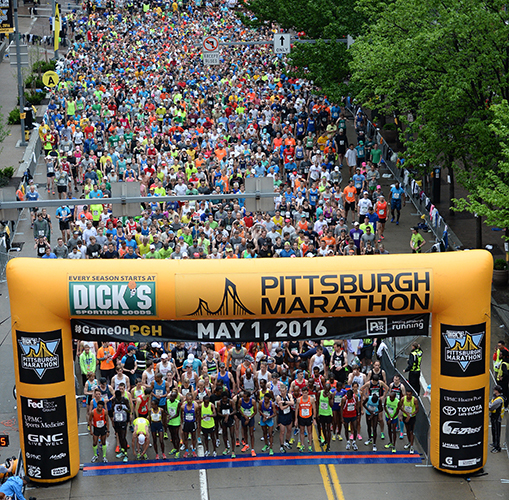
Photo: Matt Freed, P3R Photography
View Larger Image

Photo: Matt Freed, P3R Photography
View Larger Image
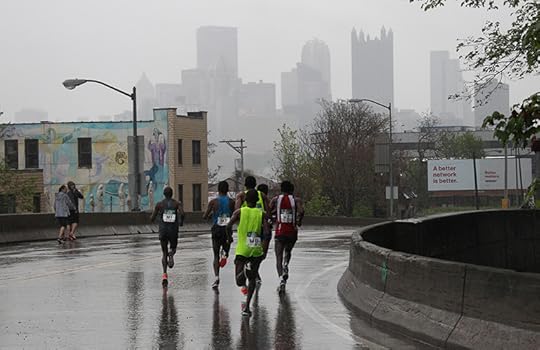
Photo: Jason Cohn, P3R Photography
View Larger Image
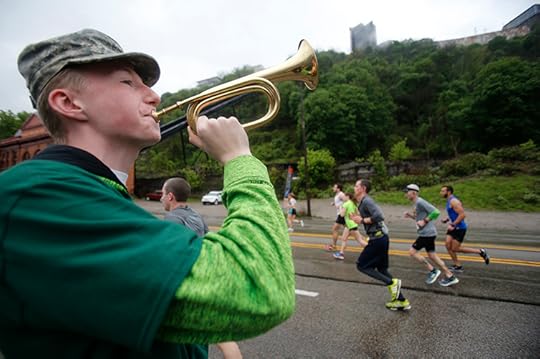
Photo: Jason Cohn, P3R Photography
View Larger Image
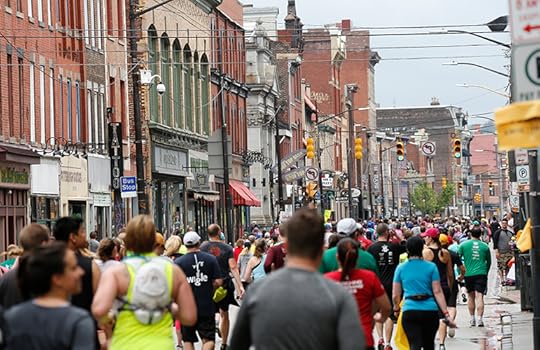
Photo: Jason Cohn, P3R Photography
View Larger Image
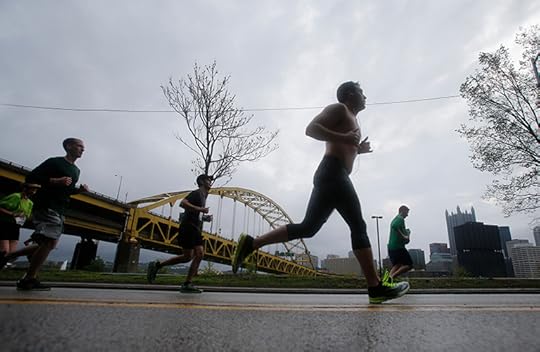
Photo: Jason Cohn, P3R Photography
View Larger Image

Photo: Pete Madia, P3R Photography
View Larger Image
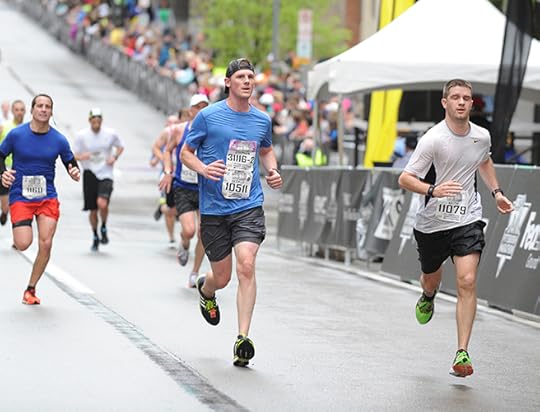
Photo: Pete Madia, P3R Photography
View Larger Image

Photo: Phil Pavely, P3R Photography
View Larger Image

Photo: Jason Cohn, P3R Photography
View Larger Image

Photo: Phil Pavely, P3R Photography
View Larger Image
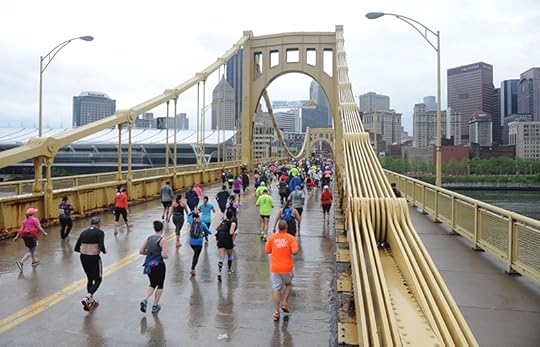
Photo: Phil Pavely, P3R Photography
View Larger Image
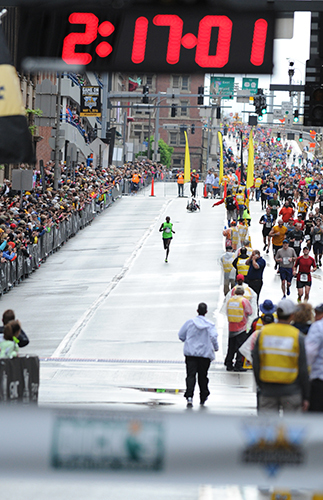
Photo: Pete Madia, P3R Photography
View Larger Image
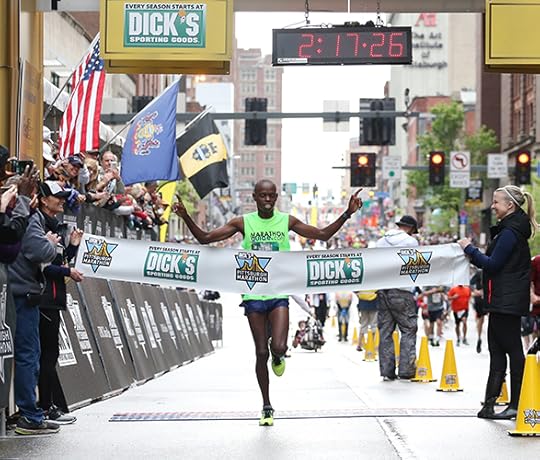
Photo: Chuck LeClaire, P3R Photography
View Larger Image
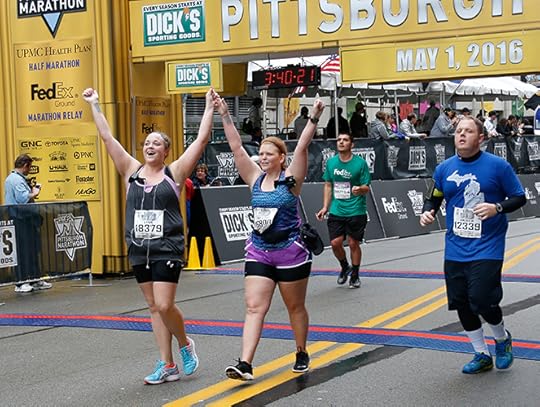
Photo: Jason Cohn, P3R Photography
View Larger Image
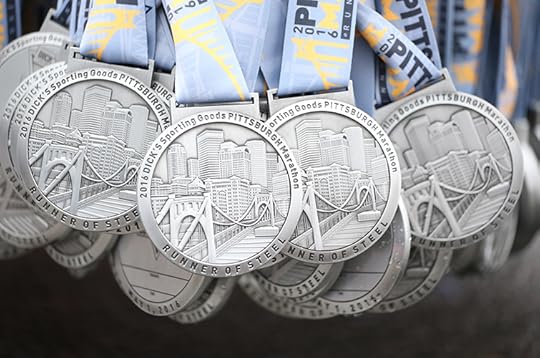
Photo: Chuck LeClaire, P3R Photography
Related Galleries

Photos: KiDS ROCK Nashville

Photos: The Beautiful Scenery of the La Jolla Half Marathon

Photos: 2016 EDP Rock ‘n’ Roll Madrid Marathon

The Faces of Boston: Amazing Images from the 2016 Boston Marathon

More Galleries
The post Photos: 2016 Pittsburgh Marathon appeared first on Competitor.com.
Ryan Hall's Blog
- Ryan Hall's profile
- 21 followers



